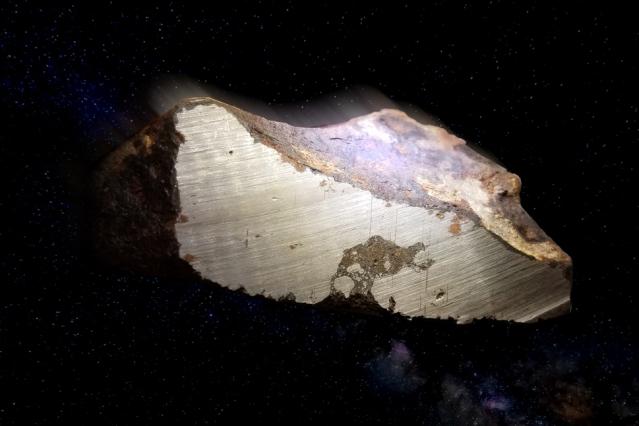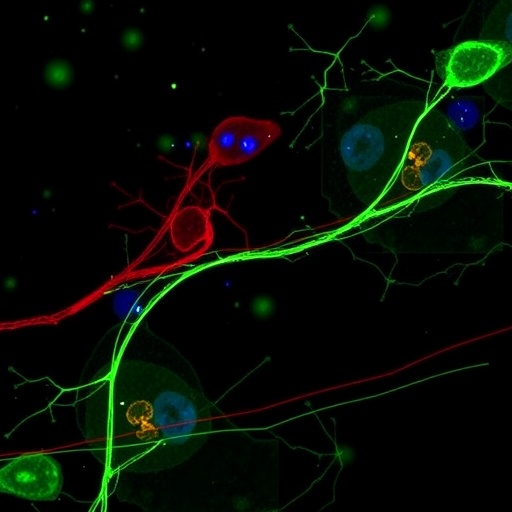Berkeley Lab scientists contribute to study exploring magnetization preserved for billions of years in meteorite samples

Credit: Carl Agee/Institute of Meteoritics, University of New Mexico; background edited by MIT News
X-ray experiments at Lawrence Berkeley National Laboratory (Berkeley Lab) played a key role in resolving the origin of rare, odd meteorites that have puzzled scientists since their discovery a half-century ago. Known as type IIE iron meteorites, they appear to have originated from a parent body that had a composition featuring both fully melted and unmelted parts – other meteorite types display only one composition.
Researchers used Berkeley Lab’s Advanced Light Source (ALS), a synchrotron user facility that produces light ranging from infrared to X-rays for a variety of experiments, to produce 3D reconstructions of the detailed patterns of magnetic orientation imprinted in samples from two of these rare meteorites. Only nine of these meteorites have been found on Earth.
The magnetization pockets pointed to their likely origin in a large “planetesimal” – an object that took shape during the formative stage of our solar system – that indeed was both unmelted and melted. The object likely had a molten metallic core, a solid crust, and a magnetic field that may have rivaled the Earth’s in strength. The study was published online July 24 in Science Advances.
The ALS experiments used an X-ray microscopy technique known as XPEEM, coupled with a technique known as XMCD that produced greater contrast, to generate more than 500 images of the 3D-reconstructed magnetization for each sample.
“We helped the research team to get this quantitative information about the direction and magnitude of the magnetization” in the samples, said Berkeley Lab’s Andreas Scholl, who first met with researchers on the team in 2015. Scholl is a senior staff scientist, beamline scientist, and science deputy at the ALS.
Rajesh Chopdekar, an ALS project scientist and a beamline scientist, noted that the X-rays were tuned specifically to measure the magnetic iron present in the samples. Thousands of magnetic images were compiled to generate statistical confidence in the magnitude and direction of the ancient magnetic field imprinted into the meteorites.
###
The Advanced Light Source is a DOE Office of Science user facility.
The research team was led by scientists from the Massachusetts Institute of Technology, and also featured participation by researchers at the University of Cambridge, University of Chicago, and the Institute for the Science of Exploration Targets. The study was supported by the U.S. Department of Energy’s Office of Science, the NASA Discovery Program, the NASA Emerging Worlds program, and the University of Cambridge.
More:
“An origin story for a family of oddball meteorites,” MIT News, July 24, 2020.
Founded in 1931 on the belief that the biggest scientific challenges are best addressed by teams, Lawrence Berkeley National Laboratory and its scientists have been recognized with 13 Nobel Prizes. Today, Berkeley Lab researchers develop sustainable energy and environmental solutions, create useful new materials, advance the frontiers of computing, and probe the mysteries of life, matter, and the universe. Scientists from around the world rely on the Lab’s facilities for their own discovery science. Berkeley Lab is a multiprogram national laboratory, managed by the University of California for the U.S. Department of Energy’s Office of Science.
DOE’s Office of Science is the single largest supporter of basic research in the physical sciences in the United States, and is working to address some of the most pressing challenges of our time. For more information, please visit energy.gov/science.
Media Contact
Glenn Roberts Jr.
[email protected]
Original Source
https:/
Related Journal Article
http://dx.




